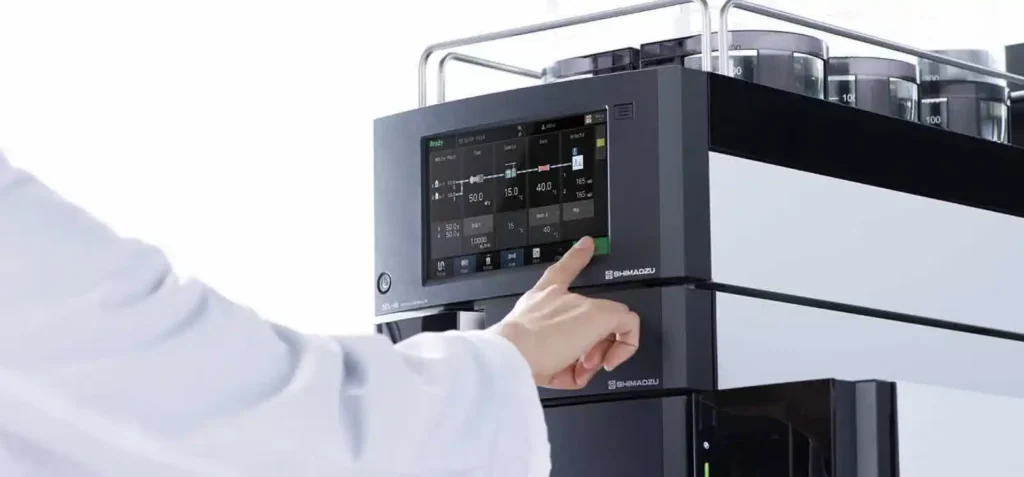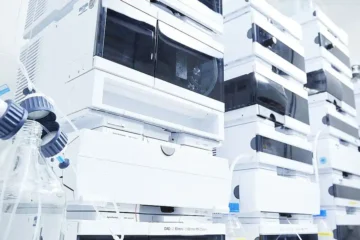High-Performance Liquid Chromatography (HPLC) is an essential analytical technique used in various fields, including pharmaceuticals, environmental analysis, and food safety. While HPLC systems are robust and reliable, they can experience issues that may affect performance and results. Understanding common problems and their solutions can help ensure smooth operation and accurate outcomes. This article will guide you through basic troubleshooting techniques for HPLC systems, focusing on common issues and practical solutions.
1. Understanding the Components of HPLC
Before diving into troubleshooting, it’s essential to understand the primary components of an HPLC system:
- Solvent Reservoirs: Hold the mobile phase.
- Pumps: Deliver the mobile phase at a controlled flow rate.
- Injector: Introduces the sample into the flow stream.
- Column: The heart of the HPLC system, where separation occurs.
- Detector: Monitors the eluent to identify and quantify compounds.
- Data System: Records and processes the detector response.
Familiarity with these components will aid in diagnosing issues effectively.
2. Common HPLC Problems
2.1. Poor Peak Shape
Symptoms: Broad, asymmetric, or split peaks.
Causes:
- Improper column packing or damage.
- Incompatible mobile phase and stationary phase.
- Sample overload.
Solutions:
- Check Column Condition: Replace or recondition the column if it’s damaged or packed improperly.
- Adjust Mobile Phase Composition: Ensure compatibility between the mobile phase and stationary phase.
- Reduce Sample Load: Dilute the sample to avoid overload and retest.
2.2. Baseline Noise or Drift
Symptoms: Fluctuating baseline, making it difficult to interpret results.
Causes:
- Inconsistent solvent delivery.
- Gas bubbles in the system.
- Temperature fluctuations.
Solutions:
- Purge the System: Use the solvent to eliminate gas bubbles. Run a few mL of solvent through the system to remove trapped air.
- Check Pump Performance: Ensure the pump is functioning correctly and is not delivering air or has a leak.
- Control Temperature: Use a temperature-controlled environment for both the HPLC system and mobile phases to minimize fluctuations.
2.3. Retention Time Variability
Symptoms: Changes in the time it takes for a compound to elute.
Causes:
- Variation in mobile phase composition.
- Column deterioration.
- Inconsistent temperature.
Solutions:
- Standardize Mobile Phase Preparation: Always use the same solvents and conditions to prepare your mobile phase.
- Monitor Column Condition: Check for signs of degradation or contamination and replace the column if necessary.
- Temperature Control: Maintain a constant temperature throughout the analysis.
2.4. Low Sensitivity or No Response
Symptoms: Weak or absent peaks.
Causes:
- Incorrect detector settings.
- Sample concentration too low.
- Blocked injector or column.
Solutions:
- Optimize Detector Settings: Ensure the wavelength and other settings are correctly adjusted for the compounds being analyzed.
- Increase Sample Concentration: If the sample is too dilute, concentrate it or use a larger injection volume.
- Clean the Injector and Column: Use appropriate solvents to backflush or clean clogged components.
2.5. Leakage
Symptoms: Presence of liquid around the HPLC system.
Causes:
- Worn seals or fittings.
- Loose connections.
- Cracks in the solvent reservoir.
Solutions:
- Inspect Connections: Tighten all fittings and connections. Replace any worn or damaged seals.
- Check Reservoirs: Inspect solvent reservoirs for cracks or leaks and replace if necessary.
- Use Proper Maintenance: Regularly check and maintain all parts to prevent leaks from developing.
2.6. Reproducibility Issues
Symptoms: Variability in results from repeated analyses.
Causes:
- Inconsistent sample preparation.
- Fluctuations in environmental conditions.
- Poor method development.
Solutions:
- Standardize Sample Preparation: Use consistent procedures for sample preparation, including the same volumes and concentrations.
- Control Environmental Conditions: Ensure that the temperature and humidity levels remain constant during analyses.
- Refine Methods: Review and optimize the method to improve reproducibility.

3. Best Practices for HPLC Maintenance
To minimize issues and extend the life of your HPLC system, follow these best practices:
3.1. Regular Maintenance Schedule
- Daily Checks: Inspect and document the performance of the HPLC system, checking for leaks, noise, and baseline stability.
- Weekly Maintenance: Clean the injector and perform system purges to prevent contamination.
- Monthly Inspections: Evaluate the condition of the column and detector, and replace components as necessary.
3.2. Use High-Quality Solvents
Always use HPLC-grade solvents to prevent contamination and ensure consistent results. Impurities in solvents can lead to noise and baseline drift.
3.3. Training and Documentation
Ensure that all personnel operating the HPLC system are adequately trained. Maintain detailed records of all runs, including conditions, sample details, and any issues encountered.
Troubleshooting HPLC systems involves understanding common problems and their solutions. By familiarizing yourself with the symptoms, causes, and remedies, you can address issues effectively and maintain the reliability of your HPLC analyses. Regular maintenance, proper training, and the use of quality materials will further enhance your system’s performance and longevity.
Remember, HPLC troubleshooting is an integral part of the analytical process. By applying these basic troubleshooting techniques, you can ensure accurate results and contribute to the success of your analytical endeavors. Keep your HPLC running smoothly, and happy analyzing!




